-
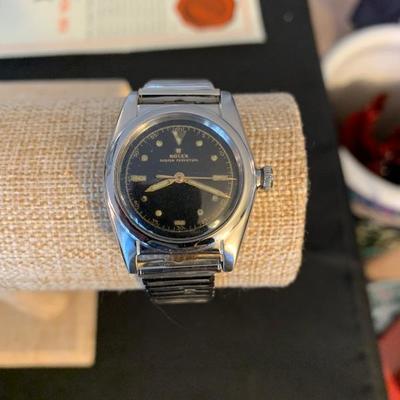
A 1944 Rolex Oyster wristwatch belonging to a Stalag Luft III POW. Hans Wilsdorf, founder of the Rolex watch company, came up with a sales tactic during World War II. He allowed POWs to purchase his watches on credit receiving payment from family members. The owner of the watch was 2nd Lt. Robert L. Bru, his aircraft, a Boston III (Z2194), was shot down near Dunkirk following a bombing raid on a power plant in northern France. From there he found his way to Stalag Luft III. The same place where a 220 men took part in an actual escape on March 24th, 1944, which became known as The Great Escape. 1 / 24 -
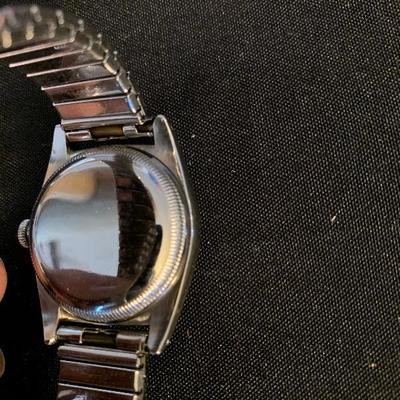
A 1944 Rolex Oyster wristwatch belonging to a Stalag Luft III POW. Hans Wilsdorf, founder of the Rolex watch company, came up with a sales tactic during World War II. He allowed POWs to purchase his watches on credit receiving payment from family members. The owner of the watch was 2nd Lt. Robert L. Bru, his aircraft, a Boston III (Z2194), was shot down near Dunkirk following a bombing raid on a power plant in northern France. From there he found his way to Stalag Luft III. The same place where a 220 men took part in an actual escape on March 24th, 1944, which became known as The Great Escape. 2 / 24 -
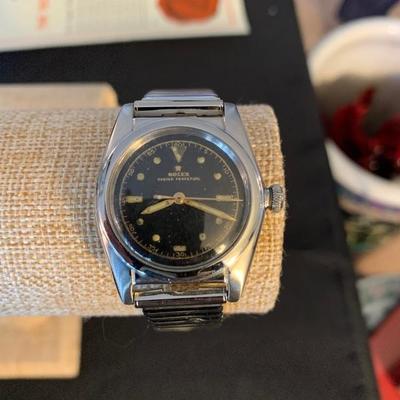
A 1944 Rolex Oyster wristwatch belonging to a Stalag Luft III POW. Hans Wilsdorf, founder of the Rolex watch company, came up with a sales tactic during World War II. He allowed POWs to purchase his watches on credit receiving payment from family members. The owner of the watch was 2nd Lt. Robert L. Bru, his aircraft, a Boston III (Z2194), was shot down near Dunkirk following a bombing raid on a power plant in northern France. From there he found his way to Stalag Luft III. The same place where a 220 men took part in an actual escape on March 24th, 1944, which became known as The Great Escape. 3 / 24 -
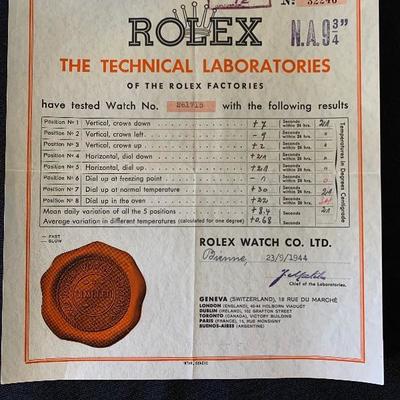
A 1944 Rolex Oyster wristwatch belonging to a Stalag Luft III POW. Hans Wilsdorf, founder of the Rolex watch company, came up with a sales tactic during World War II. He allowed POWs to purchase his watches on credit receiving payment from family members. The owner of the watch was 2nd Lt. Robert L. Bru, his aircraft, a Boston III (Z2194), was shot down near Dunkirk following a bombing raid on a power plant in northern France. From there he found his way to Stalag Luft III. The same place where a 220 men took part in an actual escape on March 24th, 1944, which became known as The Great Escape. 4 / 24 -
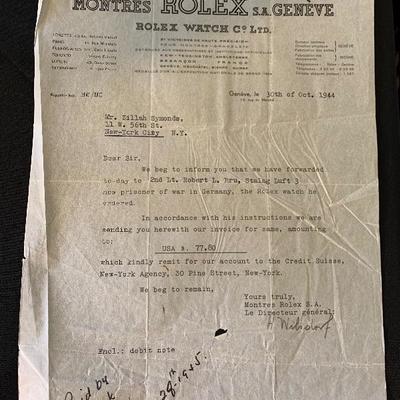
A 1944 Rolex Oyster wristwatch belonging to a Stalag Luft III POW. Hans Wilsdorf, founder of the Rolex watch company, came up with a sales tactic during World War II. He allowed POWs to purchase his watches on credit receiving payment from family members. The owner of the watch was 2nd Lt. Robert L. Bru, his aircraft, a Boston III (Z2194), was shot down near Dunkirk following a bombing raid on a power plant in northern France. From there he found his way to Stalag Luft III. The same place where a 220 men took part in an actual escape on March 24th, 1944, which became known as The Great Escape. 5 / 24 -
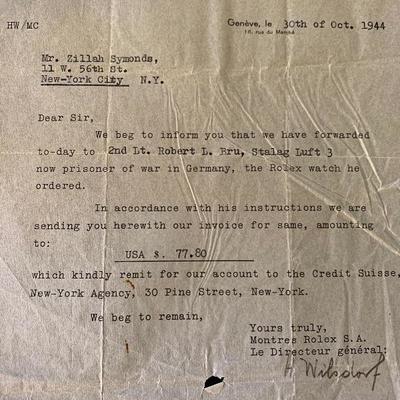
A 1944 Rolex Oyster wristwatch belonging to a Stalag Luft III POW. Hans Wilsdorf, founder of the Rolex watch company, came up with a sales tactic during World War II. He allowed POWs to purchase his watches on credit receiving payment from family members. The owner of the watch was 2nd Lt. Robert L. Bru, his aircraft, a Boston III (Z2194), was shot down near Dunkirk following a bombing raid on a power plant in northern France. From there he found his way to Stalag Luft III. The same place where a 220 men took part in an actual escape on March 24th, 1944, which became known as The Great Escape. 6 / 24 -
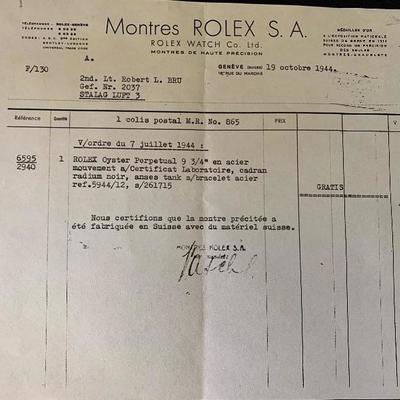
A 1944 Rolex Oyster wristwatch belonging to a Stalag Luft III POW. Hans Wilsdorf, founder of the Rolex watch company, came up with a sales tactic during World War II. He allowed POWs to purchase his watches on credit receiving payment from family members. The owner of the watch was 2nd Lt. Robert L. Bru, his aircraft, a Boston III (Z2194), was shot down near Dunkirk following a bombing raid on a power plant in northern France. From there he found his way to Stalag Luft III. The same place where a 220 men took part in an actual escape on March 24th, 1944, which became known as The Great Escape. 7 / 24 -
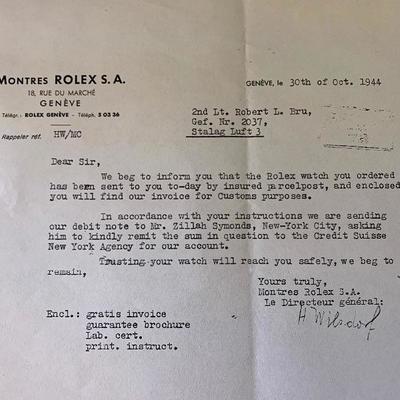
A 1944 Rolex Oyster wristwatch belonging to a Stalag Luft III POW. Hans Wilsdorf, founder of the Rolex watch company, came up with a sales tactic during World War II. He allowed POWs to purchase his watches on credit receiving payment from family members. The owner of the watch was 2nd Lt. Robert L. Bru, his aircraft, a Boston III (Z2194), was shot down near Dunkirk following a bombing raid on a power plant in northern France. From there he found his way to Stalag Luft III. The same place where a 220 men took part in an actual escape on March 24th, 1944, which became known as The Great Escape. 8 / 24 -
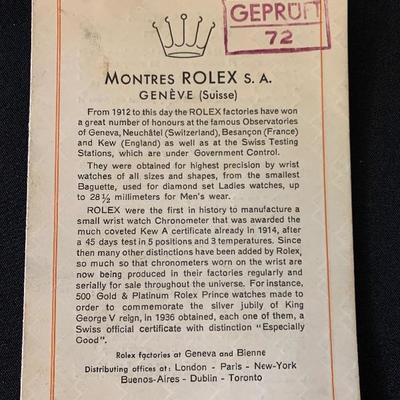
A 1944 Rolex Oyster wristwatch belonging to a Stalag Luft III POW. Hans Wilsdorf, founder of the Rolex watch company, came up with a sales tactic during World War II. He allowed POWs to purchase his watches on credit receiving payment from family members. The owner of the watch was 2nd Lt. Robert L. Bru, his aircraft, a Boston III (Z2194), was shot down near Dunkirk following a bombing raid on a power plant in northern France. From there he found his way to Stalag Luft III. The same place where a 220 men took part in an actual escape on March 24th, 1944, which became known as The Great Escape. 9 / 24 -
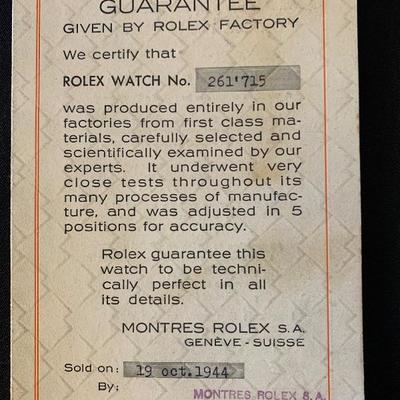
A 1944 Rolex Oyster wristwatch belonging to a Stalag Luft III POW. Hans Wilsdorf, founder of the Rolex watch company, came up with a sales tactic during World War II. He allowed POWs to purchase his watches on credit receiving payment from family members. The owner of the watch was 2nd Lt. Robert L. Bru, his aircraft, a Boston III (Z2194), was shot down near Dunkirk following a bombing raid on a power plant in northern France. From there he found his way to Stalag Luft III. The same place where a 220 men took part in an actual escape on March 24th, 1944, which became known as The Great Escape. 10 / 24 -
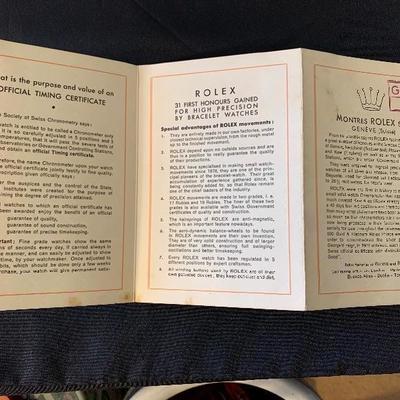
A 1944 Rolex Oyster wristwatch belonging to a Stalag Luft III POW. Hans Wilsdorf, founder of the Rolex watch company, came up with a sales tactic during World War II. He allowed POWs to purchase his watches on credit receiving payment from family members. The owner of the watch was 2nd Lt. Robert L. Bru, his aircraft, a Boston III (Z2194), was shot down near Dunkirk following a bombing raid on a power plant in northern France. From there he found his way to Stalag Luft III. The same place where a 220 men took part in an actual escape on March 24th, 1944, which became known as The Great Escape. 11 / 24 -
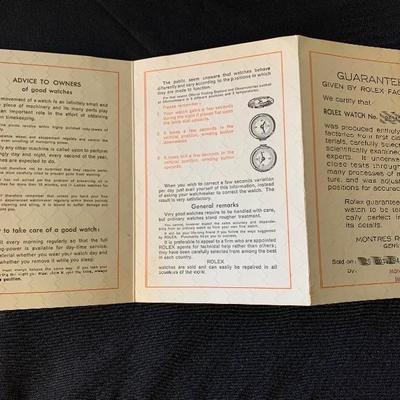
A 1944 Rolex Oyster wristwatch belonging to a Stalag Luft III POW. Hans Wilsdorf, founder of the Rolex watch company, came up with a sales tactic during World War II. He allowed POWs to purchase his watches on credit receiving payment from family members. The owner of the watch was 2nd Lt. Robert L. Bru, his aircraft, a Boston III (Z2194), was shot down near Dunkirk following a bombing raid on a power plant in northern France. From there he found his way to Stalag Luft III. The same place where a 220 men took part in an actual escape on March 24th, 1944, which became known as The Great Escape. 12 / 24 -
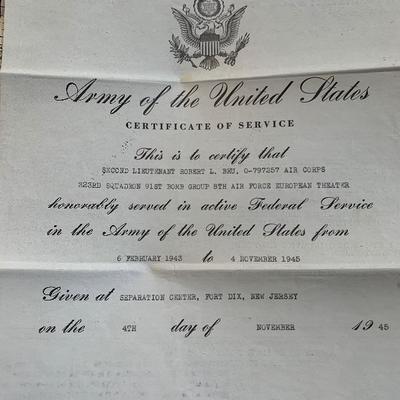
A 1944 Rolex Oyster wristwatch belonging to a Stalag Luft III POW. Hans Wilsdorf, founder of the Rolex watch company, came up with a sales tactic during World War II. He allowed POWs to purchase his watches on credit receiving payment from family members. The owner of the watch was 2nd Lt. Robert L. Bru, his aircraft, a Boston III (Z2194), was shot down near Dunkirk following a bombing raid on a power plant in northern France. From there he found his way to Stalag Luft III. The same place where a 220 men took part in an actual escape on March 24th, 1944, which became known as The Great Escape. 13 / 24 -

A 1944 Rolex Oyster wristwatch belonging to a Stalag Luft III POW. Hans Wilsdorf, founder of the Rolex watch company, came up with a sales tactic during World War II. He allowed POWs to purchase his watches on credit receiving payment from family members. The owner of the watch was 2nd Lt. Robert L. Bru, his aircraft, a Boston III (Z2194), was shot down near Dunkirk following a bombing raid on a power plant in northern France. From there he found his way to Stalag Luft III. The same place where a 220 men took part in an actual escape on March 24th, 1944, which became known as The Great Escape. 14 / 24 -
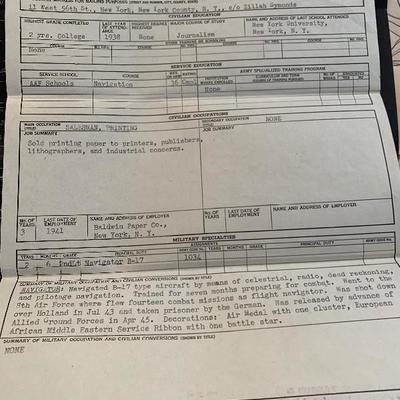
A 1944 Rolex Oyster wristwatch belonging to a Stalag Luft III POW. Hans Wilsdorf, founder of the Rolex watch company, came up with a sales tactic during World War II. He allowed POWs to purchase his watches on credit receiving payment from family members. The owner of the watch was 2nd Lt. Robert L. Bru, his aircraft, a Boston III (Z2194), was shot down near Dunkirk following a bombing raid on a power plant in northern France. From there he found his way to Stalag Luft III. The same place where a 220 men took part in an actual escape on March 24th, 1944, which became known as The Great Escape. 15 / 24 -
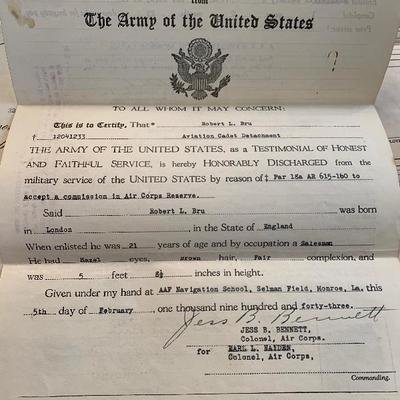
A 1944 Rolex Oyster wristwatch belonging to a Stalag Luft III POW. Hans Wilsdorf, founder of the Rolex watch company, came up with a sales tactic during World War II. He allowed POWs to purchase his watches on credit receiving payment from family members. The owner of the watch was 2nd Lt. Robert L. Bru, his aircraft, a Boston III (Z2194), was shot down near Dunkirk following a bombing raid on a power plant in northern France. From there he found his way to Stalag Luft III. The same place where a 220 men took part in an actual escape on March 24th, 1944, which became known as The Great Escape. 16 / 24 -
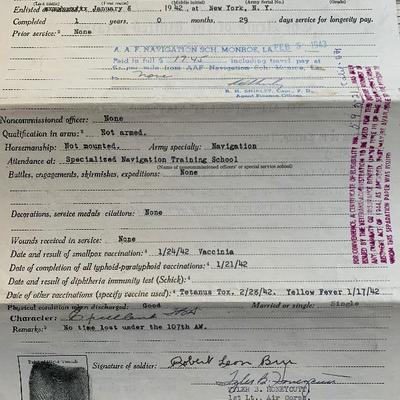
A 1944 Rolex Oyster wristwatch belonging to a Stalag Luft III POW. Hans Wilsdorf, founder of the Rolex watch company, came up with a sales tactic during World War II. He allowed POWs to purchase his watches on credit receiving payment from family members. The owner of the watch was 2nd Lt. Robert L. Bru, his aircraft, a Boston III (Z2194), was shot down near Dunkirk following a bombing raid on a power plant in northern France. From there he found his way to Stalag Luft III. The same place where a 220 men took part in an actual escape on March 24th, 1944, which became known as The Great Escape. 17 / 24 -
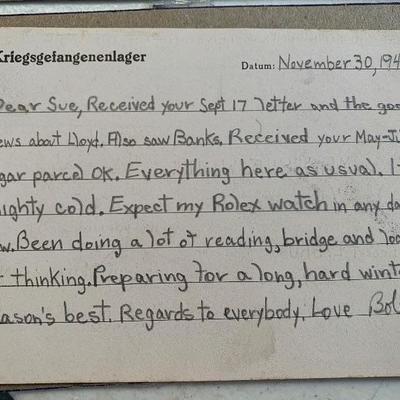
A 1944 Rolex Oyster wristwatch belonging to a Stalag Luft III POW. Hans Wilsdorf, founder of the Rolex watch company, came up with a sales tactic during World War II. He allowed POWs to purchase his watches on credit receiving payment from family members. The owner of the watch was 2nd Lt. Robert L. Bru, his aircraft, a Boston III (Z2194), was shot down near Dunkirk following a bombing raid on a power plant in northern France. From there he found his way to Stalag Luft III. The same place where a 220 men took part in an actual escape on March 24th, 1944, which became known as The Great Escape. 18 / 24 -
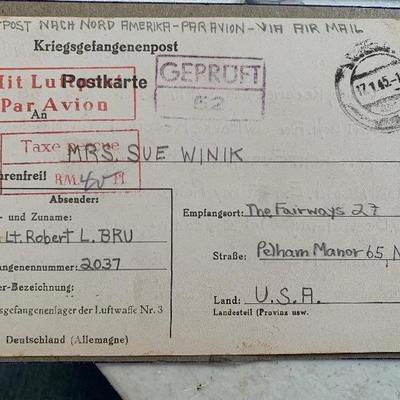
A 1944 Rolex Oyster wristwatch belonging to a Stalag Luft III POW. Hans Wilsdorf, founder of the Rolex watch company, came up with a sales tactic during World War II. He allowed POWs to purchase his watches on credit receiving payment from family members. The owner of the watch was 2nd Lt. Robert L. Bru, his aircraft, a Boston III (Z2194), was shot down near Dunkirk following a bombing raid on a power plant in northern France. From there he found his way to Stalag Luft III. The same place where a 220 men took part in an actual escape on March 24th, 1944, which became known as The Great Escape. 19 / 24 -
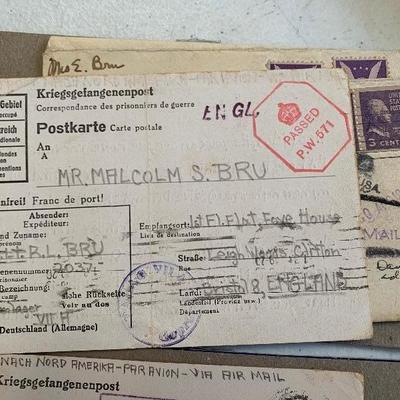
A 1944 Rolex Oyster wristwatch belonging to a Stalag Luft III POW. Hans Wilsdorf, founder of the Rolex watch company, came up with a sales tactic during World War II. He allowed POWs to purchase his watches on credit receiving payment from family members. The owner of the watch was 2nd Lt. Robert L. Bru, his aircraft, a Boston III (Z2194), was shot down near Dunkirk following a bombing raid on a power plant in northern France. From there he found his way to Stalag Luft III. The same place where a 220 men took part in an actual escape on March 24th, 1944, which became known as The Great Escape. 20 / 24 -
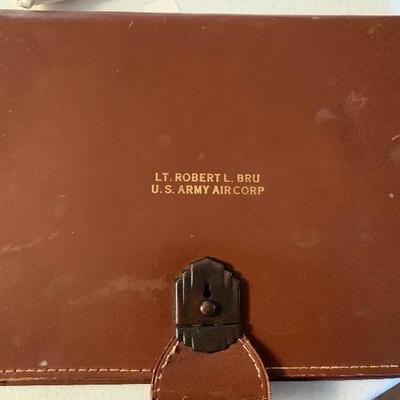
A 1944 Rolex Oyster wristwatch belonging to a Stalag Luft III POW. Hans Wilsdorf, founder of the Rolex watch company, came up with a sales tactic during World War II. He allowed POWs to purchase his watches on credit receiving payment from family members. The owner of the watch was 2nd Lt. Robert L. Bru, his aircraft, a Boston III (Z2194), was shot down near Dunkirk following a bombing raid on a power plant in northern France. From there he found his way to Stalag Luft III. The same place where a 220 men took part in an actual escape on March 24th, 1944, which became known as The Great Escape. 21 / 24 -
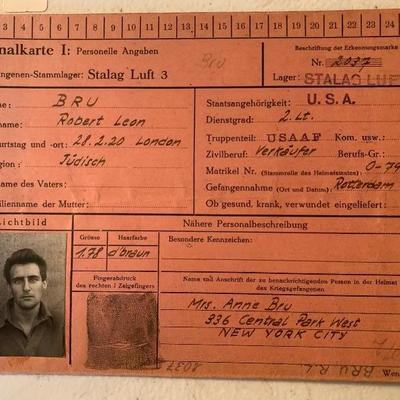
A 1944 Rolex Oyster wristwatch belonging to a Stalag Luft III POW. Hans Wilsdorf, founder of the Rolex watch company, came up with a sales tactic during World War II. He allowed POWs to purchase his watches on credit receiving payment from family members. The owner of the watch was 2nd Lt. Robert L. Bru, his aircraft, a Boston III (Z2194), was shot down near Dunkirk following a bombing raid on a power plant in northern France. From there he found his way to Stalag Luft III. The same place where a 220 men took part in an actual escape on March 24th, 1944, which became known as The Great Escape. 22 / 24 -
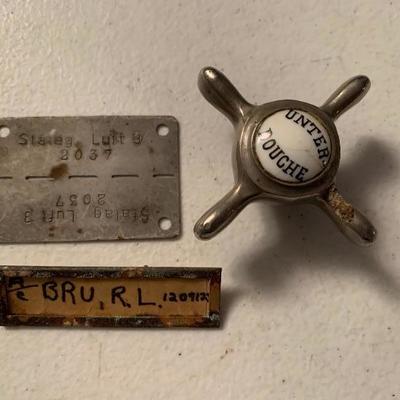
A 1944 Rolex Oyster wristwatch belonging to a Stalag Luft III POW. Hans Wilsdorf, founder of the Rolex watch company, came up with a sales tactic during World War II. He allowed POWs to purchase his watches on credit receiving payment from family members. The owner of the watch was 2nd Lt. Robert L. Bru, his aircraft, a Boston III (Z2194), was shot down near Dunkirk following a bombing raid on a power plant in northern France. From there he found his way to Stalag Luft III. The same place where a 220 men took part in an actual escape on March 24th, 1944, which became known as The Great Escape. 23 / 24 -
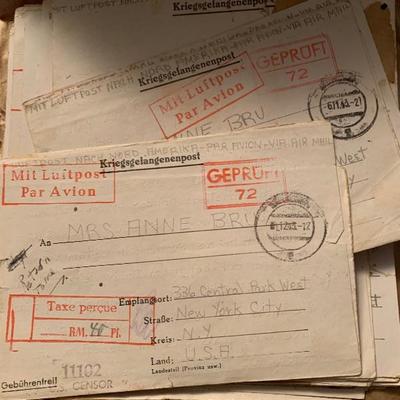
A 1944 Rolex Oyster wristwatch belonging to a Stalag Luft III POW. Hans Wilsdorf, founder of the Rolex watch company, came up with a sales tactic during World War II. He allowed POWs to purchase his watches on credit receiving payment from family members. The owner of the watch was 2nd Lt. Robert L. Bru, his aircraft, a Boston III (Z2194), was shot down near Dunkirk following a bombing raid on a power plant in northern France. From there he found his way to Stalag Luft III. The same place where a 220 men took part in an actual escape on March 24th, 1944, which became known as The Great Escape. 24 / 24
Photos 1 - 24 of 24
Per page: